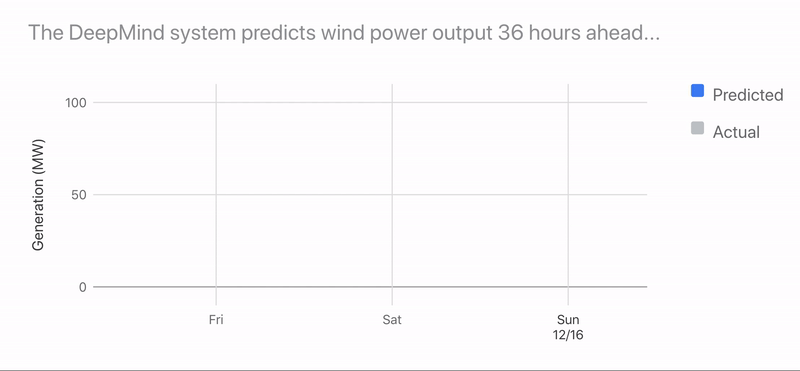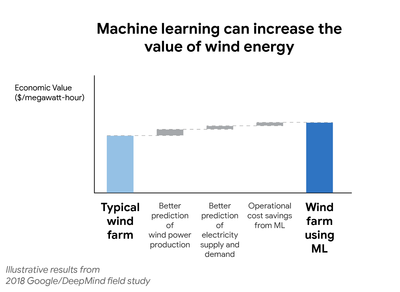
We can’t eliminate the variability of the wind, but our early results suggest that we can use machine learning to make wind power sufficiently more predictable and valuable. This approach also helps bring greater data rigor to wind farm operations, as machine learning can help wind farm operators make smarter, faster and more data-driven assessments of how their power output can meet electricity demand.

Our hope is that this kind of machine learning approach can strengthen the business case for wind power and drive further adoption of carbon-free energy on electric grids worldwide. Researchers and practitioners across the energy industry are developing novel ideas for how society can make the most of variable power sources like solar and wind. We’re eager to join them in exploring general availability of these cloud-based machine learning strategies.
Google recently achieved 100 percent renewable energy purchasing and is now striving to source carbon-free energy on a 24×7 basis. The partnership with DeepMind to make wind power more predictable and valuable is a concrete step toward that aspiration. While much remains to be done, this step is a meaningful one—for Google, and more importantly, for the environment.
This article is cross-posted from The Keyword.
